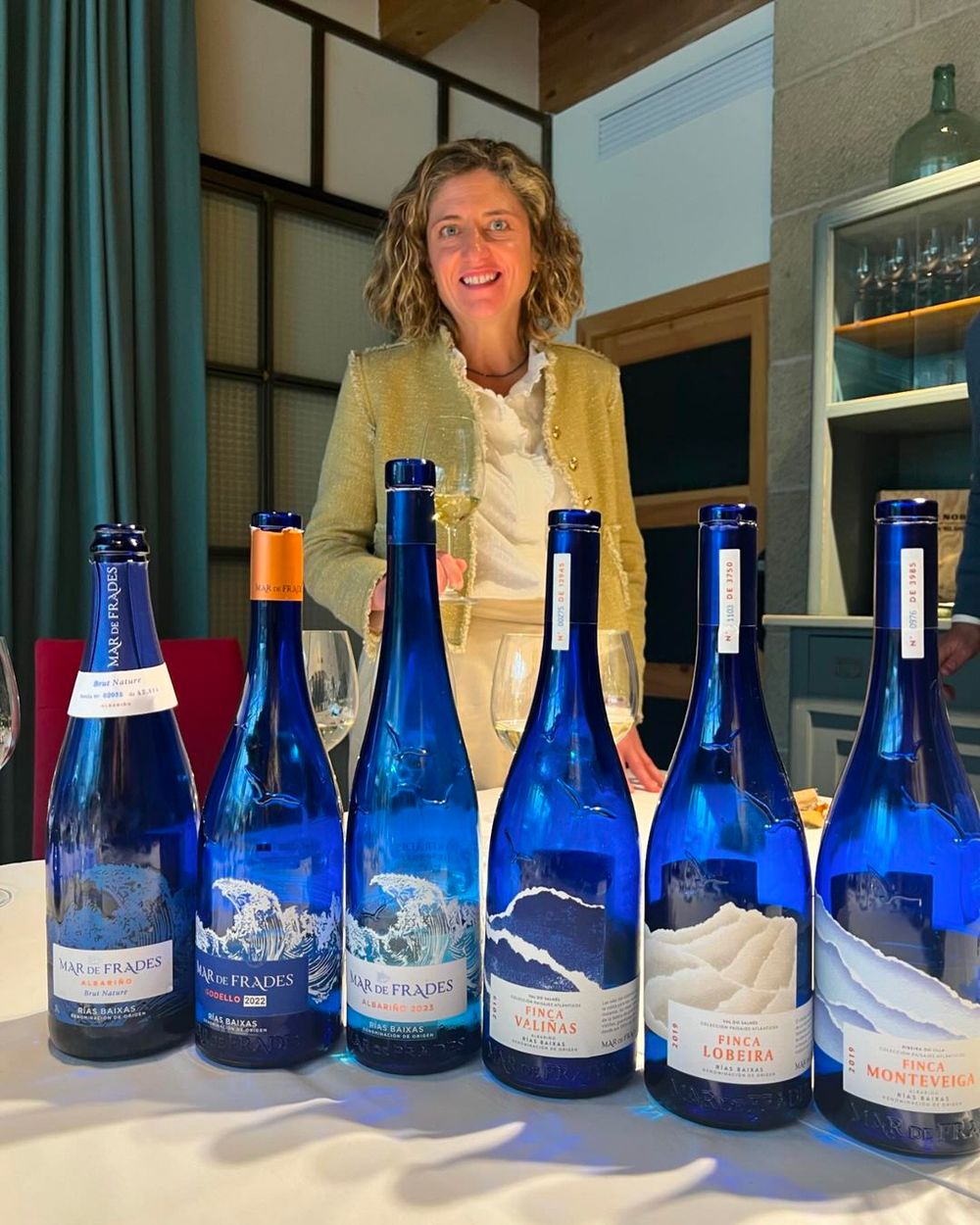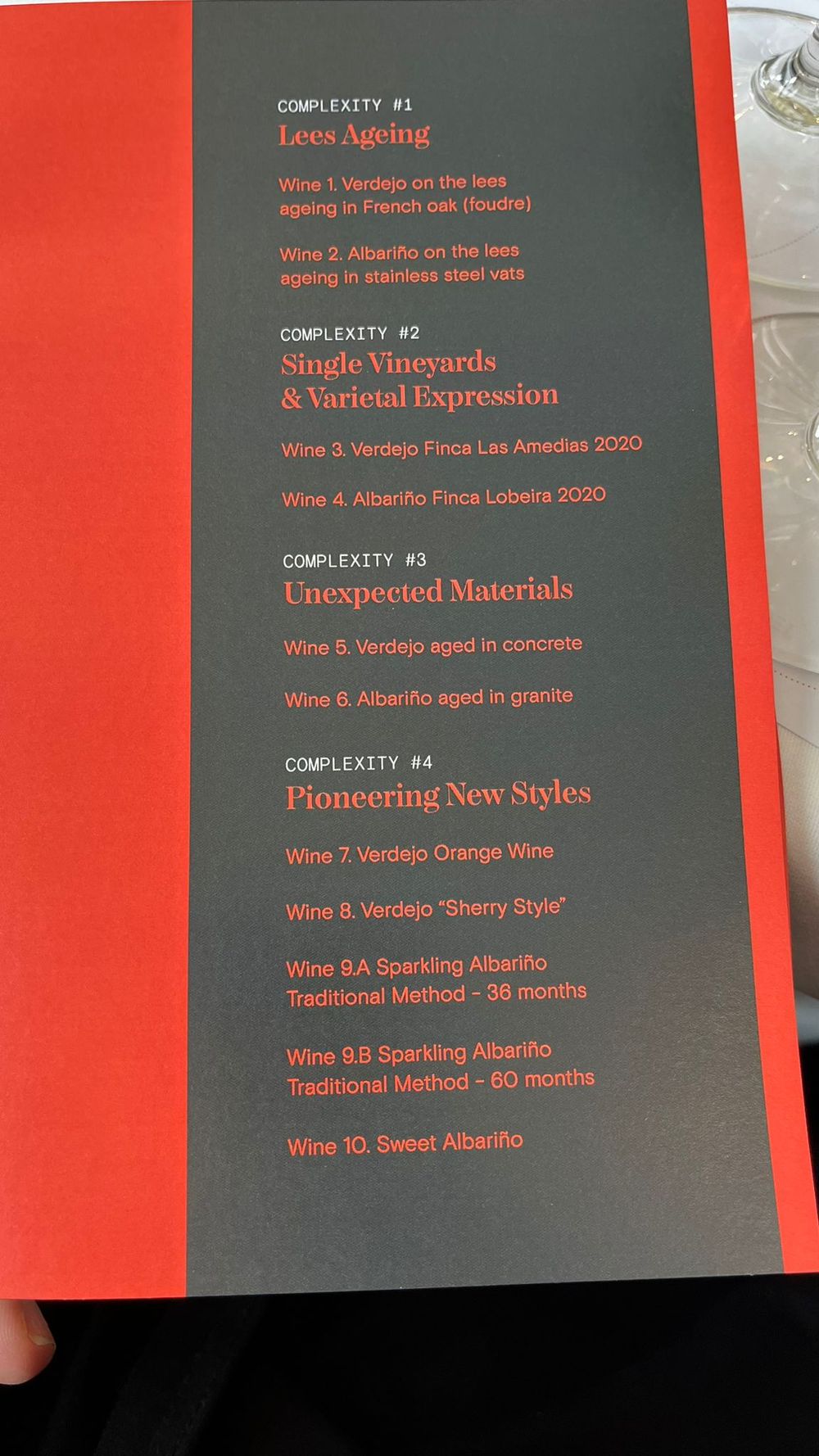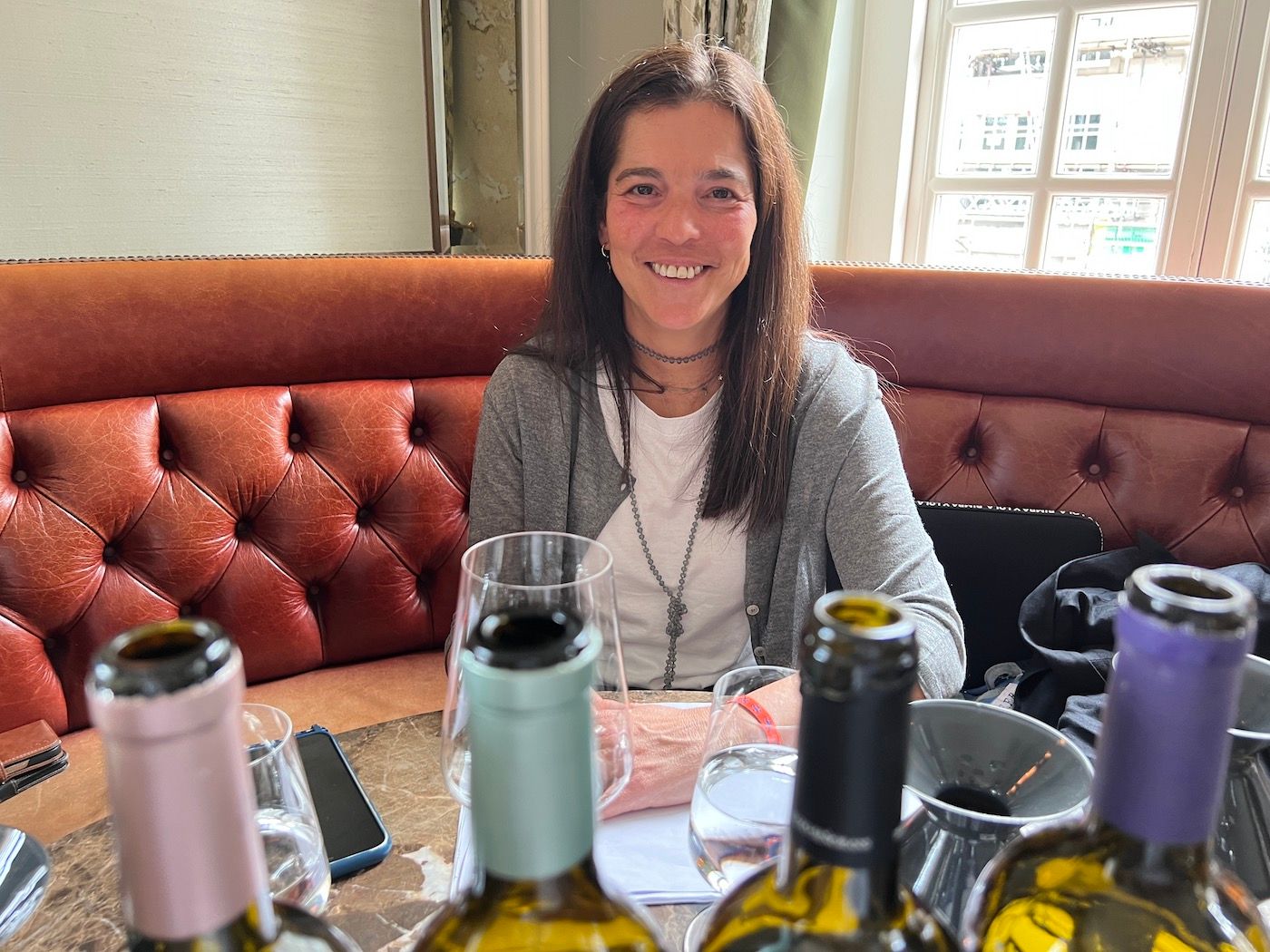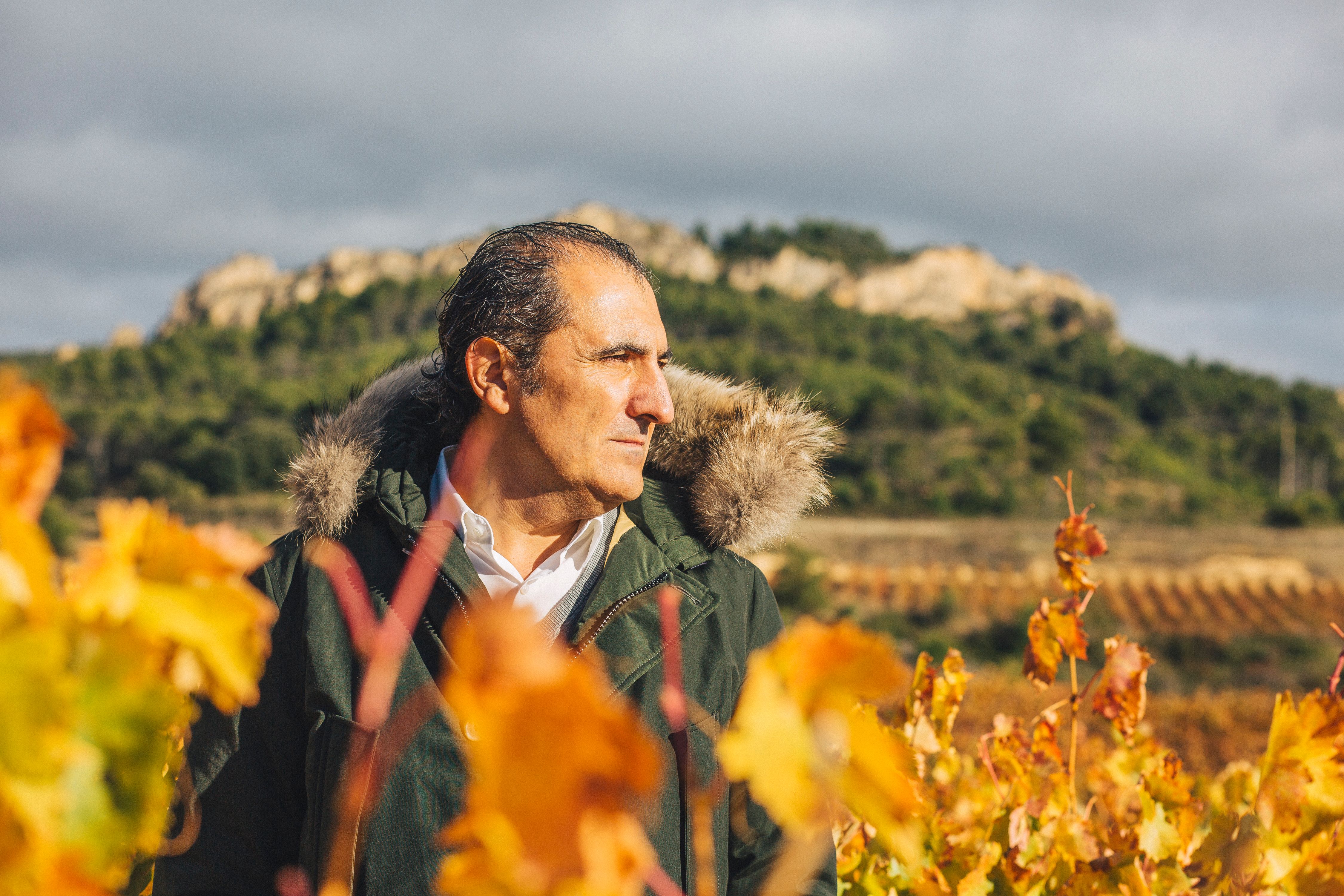The ever-increasing popularity of Albariño and Verdejo shows no signs of abating, with plantings of both Spanish indigenous varietals up significantly in the last two decades. Indeed, Albariño has become so much in demand in its spiritual home, Rías Baixas, that it makes up 96% of vines in the DOP. Albariño is also grown in the USA, Australia, New Zealand and Uruguay as well as France.
Meanwhile, Verdejo has done so well, not just in Castilla y Leon but also Castilla-La Mancha and Extremadura, that Spanish plantings of it have gone up by over 400% between 2004 and 2020 to over 25,000 hectares.

Paula Fandiño of Rías Baixas producer Mar de Frades and Sara Bañuelos of Ramón Bilbao in Rueda (r-l) at the masterclass lunch, London, July 2024
Encouraged by this global embrace of the two varietals, two of Spain’s most talented winemakers, Paula Fandiño of Rías Baixas producer Mar de Frades, and Sara Bañuelos of Ramón Bilbao in Rueda, have united in their quest to push boundaries and extend still further the depth and complexity of both wines. The pair flew into London last month with a selection of samples, most yet to be bottled, to demonstrate the marked effect of new viticultural, winemaking and maturation practices at their respective estates.
Their first two wines, each from the 2022 vintage, have yet to be bottled, being still in tank, and are experimental as such. Bañuelos’ Ramon Bilbao Verdejo was aged on the fine lees for 18 months in 45-hectolitre old French foudres. Complex spicy notes came from the old wood, with creaminess from the time on lees. The wine retained its freshness surprisingly well, with citric and tropical fruit notes also preserved.
“I want this to be a gastronomic wine,” Bañuelos said. “I prevented any malolactic fermentation as Verdejo has less acidity than Albariño and I want to keep all the acidity we have. It doesn’t have the intensity of aromas that Albariño has.”
Fandiño’s Mar de Frades Albariño 2022, which spent as much as two years on the fine lees in stainless steel vats, also saw no malolactic fermentation. It showed particularly well, with white flowers on the nose and apricot notes on the palate. Brighter in appearance than the cloudy Verdejo, it was delightfully complex.
New styles possible in Rueda and Rías Baixas

“Lots of people outside Spain know nothing about Verdejo” : Sara Bañuelos
The second Verdejo, a 2020 that has been bottled, underlined the varietal expression of a single vineyard site, namely Finca Las Amedias. The Verdejo came from the estates’ oldest vines, planted in 1999 on poorer sandier soil, while the 15% of Sauvignon Blanc blended in was from the youngest.
“It’s very special as it’s our terroir and represents a newer style that is possible in Rueda,” Bañuelos declared. “We used lees ageing in oak foudres for two years, and then transferred into concrete vats for 24 months more to add complexity and different aromas from the ageing process. I can notice oak and spicy, balsamic notes with herbs from the Sauvignon. I believe in the longevity of Verdejo. Our work with the lees is very soft as we focussed on trying to preserve the varietal profile. It’s very common to have fermentation in oak but not ageing in concrete.”

Paula Fandiño – keen to pioneer new styles of Albariño
Fandiño’s Mar de Frades Albariño 2020, which came from a single vineyard site on granite soils named Finca Lobeira, was left on the lees for as much as four years.
“It’s a very special site as it is the main sub-region of Rías Baixas,” she said. “It is near the sea but the vineyard is protected by the highest mountain, which is very important for balsamic notes. This was a fantastic vintage, giving saltiness on the palate and fresh acidity and minerality.”
The next two wines, from 2023 and still unbottled, provided an illuminating insight into how concrete and granite maturation vessels affect wines. The Ramón Bilbao Verdejo has been in 41-hectolitre concrete vats.
“It has the same profile as a young Verdejo but something different,” Bañuelos mused. “More floral notes and stone fruit as well as more evolution. You get a stronger mouthfeel from concrete with a more creamy sensation.” Meanwhile, the Mar de Frades Albariño, which had spent two months on the lees in a 2,000-litre square granite vat with the prospect of two months more, exhibited very attractive pineapple and mango notes.

The wines listed in full
Next on the agenda: a really appealing orange wine, a 2023 Verdejo made by Bañuelos.
“I decided to do it as no one else has, and no orange wines are on Spanish wine lists,” she revealed, adding she prevented malolactic fermentation as acidity often drops out of orange wines. “For me the result is good. It had 30 days' skin contact - 10 fermenting and 20 after. It’s now in an old 2016 barrel. It’s not a very strong orange wine as I don't want to lose its varietal characteristics.” Very savoury, it had biscuit and almond notes, with well-integrated and quite soft tannins.
Bañuelos’ determination to experiment led her to make a 14.5% abv Verdejo in ‘sherry style’, although it was not fortified.
“Since the end of 2020, it’s been under flor,” she said. “It’s not a sherry wine but a kind of sherry wine - a bit like a Fino. We have only two barrels, so not a solera.”
Fandiño, for her part, is also keen to pioneer new styles, producing a cracking pair of traditional method sparkling Albariños as well as a dessert wine from the same grape. “I want to express saltiness with bubbles,” she mused. “So I began to work the autolysis, and how bubbles can be smaller and smaller in the bottle. The first sample spent 36 months on lees and the second 61 months. No dosage in either. They are lovely wines.”
Her sweet wine, made from fruit harvested in 2019 but bottled in 2020, is effectively an ice wine (carbon dioxide pellets employed to freeze the grapes to -4C). With fermentation stopped at 9.5% abv with 120 g/l of residual sugar, it had alluring honey, salty notes, which is unusual in sweet wines.
With Ramón Bilbao in its centenary year, Bañuelos is hoping the company can increase its exports from its current level of 20% of production.
“Lots of people outside Spain know nothing about Verdejo,” she said. “To celebrate our centenary, we will release in October the 2019, although there will be only 2,000 bottles. It will cost €40-50. We sell about one million bottles a year in Spain but want to change to find opportunities around the world. Colombia is our first market but UK is an opportunity for us. For Ramón Bilbao, Rueda is a special project.”
Ramón Bilbao is a commercial partner of The Buyer. To discover more about them click here.







































